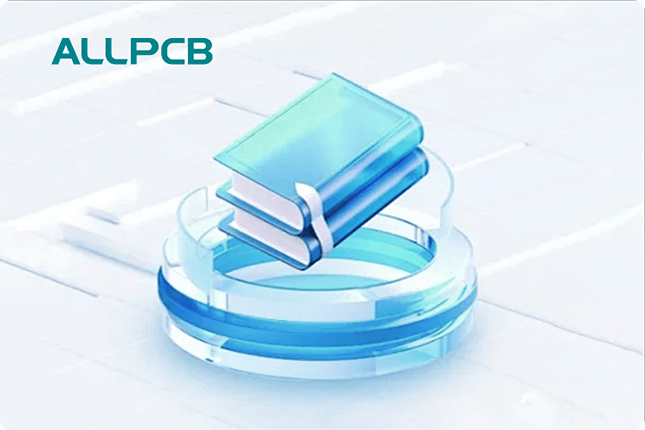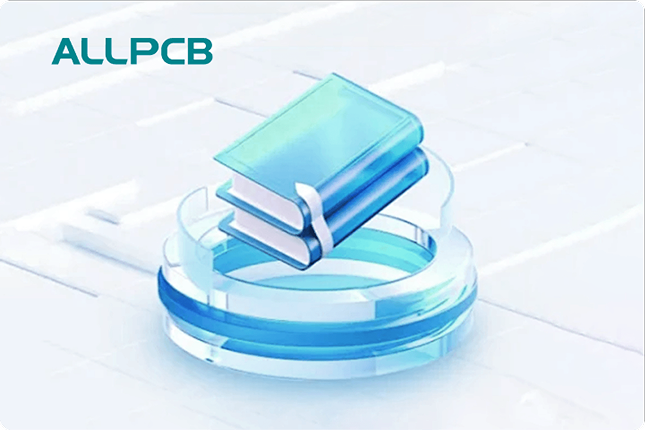When it comes to designing and manufacturing a 16-layer PCB, one of the most critical decisions is selecting the right surface finish. The surface finish protects the copper traces from corrosion, ensures reliable solderability, and impacts the overall performance and longevity of the board. For complex designs like a 16-layer PCB, where signal integrity and durability are paramount, choosing between options like ENIG, HASL, and other finishes can make a significant difference. In this comprehensive guide, we’ll explore the best surface finishes for 16-layer PCBs, focusing on corrosion resistance, cost, and application suitability. Whether you’re an engineer or a designer, this post will help you make an informed decision for your next project.
Why Surface Finish Matters for 16-Layer PCBs
A 16-layer PCB is a high-density, multilayer board often used in advanced applications like telecommunications, medical devices, and aerospace systems. With so many layers, these boards handle complex signal routing and high-speed data transmission, often requiring tight impedance control (e.g., 50 ohms for RF signals or 100 ohms for differential pairs). The surface finish plays a vital role in maintaining signal integrity by preventing oxidation of the copper traces, which can degrade performance over time. Additionally, the finish affects how well components bond to the board during assembly, impacting reliability.
Corrosion resistance is especially critical for 16-layer PCBs, as these boards are often exposed to harsh environments or long-term use. A poor surface finish can lead to failures, such as weak solder joints or signal loss, costing time and money. Let’s dive into the most popular surface finishes, starting with ENIG and HASL, and explore their pros and cons for such complex designs.
Understanding PCB Surface Finishes: The Basics
Before comparing specific finishes, it’s important to understand what a PCB surface finish does. The finish is a thin coating applied to the exposed copper on a printed circuit board to protect it from oxidation and ensure a solderable surface for component attachment. For a 16-layer PCB, where precision and reliability are key, the choice of finish must balance several factors: corrosion resistance, flatness for fine-pitch components, cost, and compatibility with assembly processes like reflow soldering.
There are several types of surface finishes available, each with unique properties. The most common ones for multilayer boards include Electroless Nickel Immersion Gold (ENIG), Hot Air Solder Leveling (HASL), Organic Solderability Preservative (OSP), Immersion Silver, and Immersion Tin. In this post, we’ll focus on ENIG and HASL, with a brief overview of other options, to help you select the best PCB surface finish for your 16-layer design.
ENIG: The Premium Choice for 16-Layer PCBs
Electroless Nickel Immersion Gold (ENIG) is a widely used surface finish for high-reliability applications, making it a top choice for 16-layer PCBs. ENIG consists of a layer of nickel (typically 3-6 micrometers thick) deposited electrolessly on the copper, followed by a thin layer of gold (0.05-0.1 micrometers) to protect the nickel from oxidation.
Advantages of ENIG
- Excellent Corrosion Resistance: The gold layer in ENIG provides superior protection against oxidation, ensuring long-term reliability even in humid or harsh environments. This makes it ideal for 16-layer PCBs used in industrial or outdoor applications.
- Flat Surface: ENIG offers a uniform, flat finish, which is critical for fine-pitch components (e.g., BGA packages with 0.5 mm pitch) often found on multilayer boards. A flat surface reduces the risk of soldering defects.
- High Reliability for Signal Integrity: With no risk of uneven solder buildup, ENIG helps maintain consistent impedance values, crucial for high-speed signals (e.g., data rates above 5 Gbps) on a 16-layer PCB.
- Long Shelf Life: Boards with ENIG can be stored for extended periods without degrading, making it a practical choice for projects with delayed assembly.
Disadvantages of ENIG
- Higher Cost: ENIG is more expensive than other finishes like HASL due to the use of gold and the complex plating process. This can be a concern for cost-sensitive projects.
- Potential for Black Pad: If not applied correctly, ENIG can suffer from a defect known as "black pad," where the nickel layer corrodes, leading to poor solderability. However, with proper manufacturing controls, this risk is minimal.
ENIG is often the go-to PCB surface finish for 16-layer designs in high-end applications where reliability and performance outweigh cost concerns. If your board requires excellent corrosion resistance and supports fine-pitch components, ENIG is a strong candidate.
HASL: A Cost-Effective Option for 16-Layer PCBs
Hot Air Solder Leveling (HASL) is one of the oldest and most cost-effective surface finishes available. In this process, the PCB is dipped in molten solder (typically a tin-lead alloy or lead-free alternative), and excess solder is blown off with hot air to create a thin, even coating on the copper pads.
Advantages of HASL
- Low Cost: HASL is significantly cheaper than ENIG, making it an attractive option for budget-conscious projects, even for complex 16-layer PCBs.
- Good Solderability: The solder coating ensures excellent wetting during assembly, leading to strong solder joints. This is beneficial for through-hole components often used in multilayer designs.
- Widely Available: HASL is a well-established process offered by nearly all PCB manufacturers, ensuring quick turnaround times.
Disadvantages of HASL
- Uneven Surface: HASL often results in an uneven finish, with solder bumps or variations in thickness. This can cause issues with fine-pitch components (below 0.8 mm pitch) commonly used on 16-layer PCBs, leading to soldering defects.
- Limited Corrosion Resistance: Compared to ENIG, HASL offers less protection against oxidation, especially in humid or high-temperature environments. This can be a concern for long-term reliability.
- Thermal Stress: The high temperatures involved in the HASL process (around 260°C) can introduce thermal stress to the PCB, potentially causing warpage in thin or multilayer boards like a 16-layer design.
HASL can be a viable PCB surface finish for 16-layer PCBs in cost-sensitive projects with less stringent requirements for surface flatness or corrosion resistance. However, for high-density designs with fine-pitch components, it may not be the best choice.
Comparing ENIG and HASL for 16-Layer PCBs
To help you decide between ENIG and HASL for your 16-layer PCB, let’s compare them across key factors:
| Factor | ENIG | HASL |
|---|---|---|
| Corrosion Resistance | Excellent | Moderate |
| Surface Flatness | Very Flat | Uneven |
| Cost | Higher | Lower |
| Solderability | Good | Excellent |
| Suitability for Fine-Pitch Components | High | Low |
| Shelf Life | Long | Moderate |
For a 16-layer PCB used in high-speed or high-reliability applications, ENIG often emerges as the better choice due to its flat surface and superior corrosion resistance. However, if your design uses larger components and operates in a controlled environment, HASL can save costs without compromising quality.
Other Surface Finishes for 16-Layer PCBs
Beyond ENIG and HASL, there are other PCB surface finishes that might suit specific 16-layer PCB applications. Here’s a brief overview:
Organic Solderability Preservative (OSP)
OSP is a thin, organic coating that protects copper from oxidation. It’s cost-effective and environmentally friendly but offers limited corrosion resistance compared to ENIG. It’s best for short-term storage and applications with quick assembly turnaround. OSP may not be ideal for 16-layer PCBs in harsh environments due to its lower durability.
Immersion Silver
Immersion Silver provides a flat surface and good solderability, making it suitable for fine-pitch components on 16-layer PCBs. However, it tarnishes over time if exposed to air, reducing shelf life. It’s a good middle-ground option between ENIG and HASL in terms of cost and performance.
Immersion Tin
Immersion Tin offers a flat finish and decent solderability but is prone to whisker growth—a phenomenon where tiny tin filaments form and cause short circuits. This makes it less ideal for high-reliability 16-layer PCB designs.
Each of these finishes has niche applications, but for most 16-layer PCBs, ENIG remains the preferred choice for balancing performance and reliability.
Factors to Consider When Choosing a Surface Finish
Selecting the right PCB surface finish for a 16-layer PCB involves evaluating several factors based on your project’s needs. Here are the key considerations:
- Application Environment: Will the PCB operate in a humid, high-temperature, or corrosive environment? If so, prioritize finishes with high corrosion resistance, like ENIG.
- Component Type: If your 16-layer PCB uses fine-pitch or surface-mount components, choose a flat finish like ENIG or Immersion Silver to avoid soldering issues.
- Signal Integrity: For high-speed designs (e.g., operating at frequencies above 1 GHz), a uniform finish like ENIG helps maintain consistent impedance and reduces signal loss.
- Budget: If cost is a major concern and the design allows for some flexibility in surface flatness, HASL can be a practical choice.
- Assembly Process: Consider whether your assembly process involves multiple reflow cycles, as some finishes (like OSP) may degrade under repeated heat exposure.
By weighing these factors, you can narrow down the best PCB surface finish for your specific 16-layer PCB project.
Best Practices for PCB Plating and Surface Finish Application
To ensure the chosen surface finish performs as expected on your 16-layer PCB, follow these best practices during design and manufacturing:
- Specify Finish Requirements Clearly: Include detailed specifications for the surface finish in your design files, such as thickness tolerances for ENIG (e.g., nickel at 3-6 μm, gold at 0.05-0.1 μm).
- Work with a Reliable Manufacturer: Partner with a trusted PCB fabrication provider to ensure consistent application of the surface finish, avoiding defects like black pad in ENIG.
- Test for Compatibility: Conduct solderability and reliability tests on prototype boards to confirm that the chosen finish meets your performance expectations.
- Store Boards Properly: For finishes with shorter shelf life (like HASL or OSP), store PCBs in a controlled environment to prevent oxidation before assembly.
Following these practices can help maximize the effectiveness of your chosen PCB plating and surface finish, ensuring a durable and high-performing 16-layer PCB.
Conclusion: Making the Right Choice for Your 16-Layer PCB
Selecting the right surface finish for a 16-layer PCB is a crucial step in ensuring the board’s reliability, performance, and longevity. ENIG stands out as the premium choice for most high-density, high-speed designs due to its excellent corrosion resistance, flat surface, and suitability for fine-pitch components. On the other hand, HASL offers a cost-effective alternative for projects with simpler requirements and larger components. Other finishes like OSP, Immersion Silver, and Immersion Tin may also have their place in specific scenarios.
Ultimately, the best PCB surface finish depends on your project’s unique needs, including the operating environment, component types, and budget constraints. By understanding the strengths and weaknesses of each option and following best practices in design and manufacturing, you can ensure your 16-layer PCB performs optimally in its intended application. Trust in a thorough evaluation of your requirements to guide your decision, and you’ll set your project up for success.
 ALLPCB
ALLPCB







